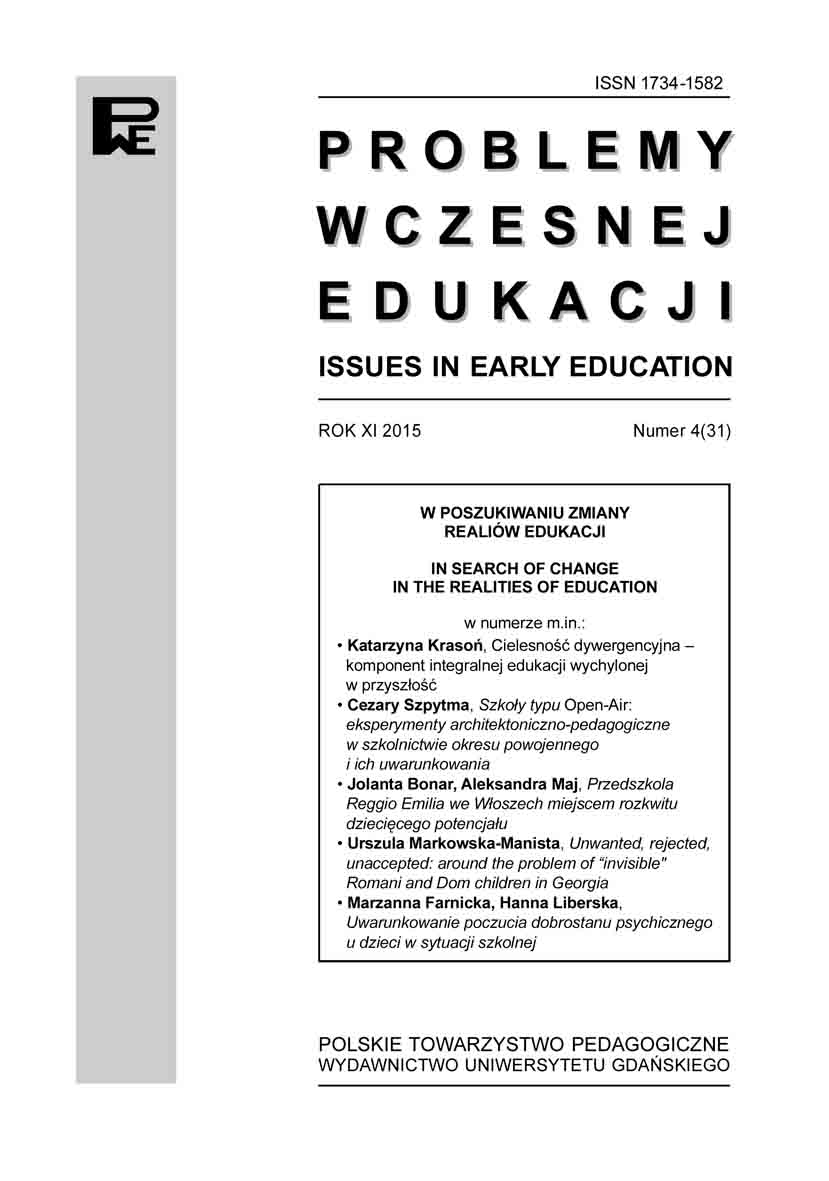Natura, architektura i zabawa jako źródła przeżyć estetycznych i odkryć geometrycznych dzieci – badania w działaniu
Nature, architecture and play as the sources of children’s aesthetic experiences and geometrical discoveries – action research
Author(s): Barbara Bilewicz-Kuźnia , Małgorzata Centner-GuzSubject(s): Social Sciences, Education
Published by: Polskie Towarzystwo Pedagogiczne
Keywords: Fröebel’s approach; M. Montessori’s views; the child; aesthetic sensitivity; geometrical discovers; didactic materials
Summary/Abstract: Every child has an innate sense of rhythm, beauty and harmony, enjoys observing nature and architecture, plays with the gifts of nature and decorates. As a matter of fact, in the course of such activities the child not only experiences pleasure, but also discovers new phenomena, refines visual perception and aesthetic sensitivity, constructs mathematical concepts, enters the world of geometry. The relationship between nature and art, play and culture, as well as the educational significance of observation and activity have been stressed by a number of researchers into child development, including Maria Montessori. She claimed that for a child, learning is a natural process, occurring spontaneously not thanks to passive listening, but thanks to active contact with the environment. The didactic materials she devised are characterized by purposefulness, isolated difficulty, stimulation of the child, visual beauty and order. The source of their beauty lies, above all, in their simplicity and transparency. M. Montessori’s and F. Froebel’s educational materials were the inspiration for devising original teaching aids, Esy floresy blocks. The current paper presents the methods of using them for playing, observing nature and architecture, that were validated in action research. The aim of the methodological solutions described here is to sensitize children to discovering beauty and geometrical dependencies in their surroundings, as well as to develop their spatial thinking.
Journal: Problemy Wczesnej Edukacji
- Issue Year: XI/2015
- Issue No: 4 (31)
- Page Range: 101-121
- Page Count: 22
- Language: Polish

